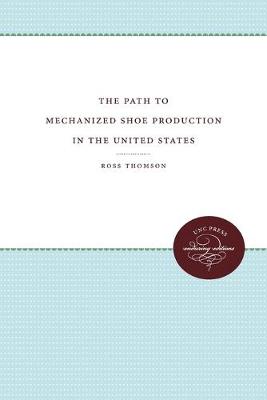In 1800, shoes in the United States were made by craftsmen, each trained to create an entire shoe. A century later, shoes were mass-produced in factories employing dozens of machines and specialized workers. Ross Tomson describes this transition from craft to mechanized production in one of the largest American industries of the nineteenth century.
Early shoe machinery originated through innovations made by shoemakers, tailors, and especially machinists. It contined to evolve through a process of ""learning by selling,"" in which sales of one generation of machines led to technological learning and ongoing invention by those who used, serviced, and sold them. As a result of this process, the mechanization of the shoe industry and the manufacturers of the machinery it used -- including such firms as Singer and United Shoe Machinery -- evolved together.
In researching the process of industrialization, Thomson examined nearly 8,000 patents. Comparing the patent information with directories for more than eighty American cities, he was able to find out who the inventors were, who employed them, how many patents they held, and the extend to which their inventions were used.
A UNC Press Enduring Edition -- UNC Press Enduring Editions use the latest in digital technology to make available again books from our distinguished backlist that were previously out of print. These editions are published unaltered from the original, and are presented in affordable paperback formats, bringing readers both historical and cultural value.
- ISBN13 9780807857557
- Publish Date 1 February 2012
- Publish Status Active
- Out of Print 5 June 2021
- Publish Country US
- Imprint The University of North Carolina Press
- Edition New edition
- Format Paperback
- Pages 312
- Language English
